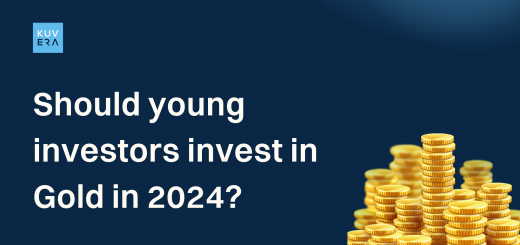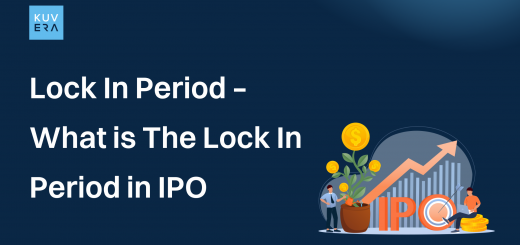Minimising market risks is an integral part of trading in the stock market. As a result, traders generally prefer engaging in futures and options trading. Essentially, these contracts derive their value from a company’s assets like stocks, shares, commodities, etc. Unlike stocks, derivatives do not have intrinsic value.
To learn how to trade in futures and options F&O , read on!
How to Trade in Futures and Options?
Follow these steps to trade in futures and options:
Step 1: Create a trading account with a BSE/NSE registered broker that allows future/options trading.
Step 2: Log on to the trading portal (also available as a smartphone application).
Step 3: Do your research on the available options and calculate expected profits.
Step 4: Purchase futures/options at the strike price, the price at which the put or call option is exercised. If prices are expected to rise, investors buy a call option, sell a put option, and vice versa.
Step 5: Identify the spot price (the current market price of a futures contract) as the base indicator for futures contract pricing.
Once you have purchased an options contract, here are the following outcomes:
- Offsetting involves selling the options contract to close the position held before expiry. Profits/losses depend on the price at which underlying assets are sold.
- Exercising involves initiating a call options contract when the underlying asset cost exceeds the strike price. Put options prevail when the strike price exceeds the underlying asset price.
- An options contract can expire while exercising call options if the price of underlying assets has already expired below the strike price. For put options, the price of underlying assets goes beyond the strike price.
Defining Futures and Options ( F&O)
Investors can trade derivatives on the stock exchange, regulated by the Securities and Exchange Board of India. They are different from stocks and shares in terms of working and risks involved.
Essentially, futures are contracts with obligations to perform a transaction at a future date. The interested parties mutually agree upon the price of these futures.
An underlying financial instrument like stock determines the value of options. Investors have the opportunity to perform transactions at a price that is agreed upon mutually. There are obligations to buy/sell the asset, and it is solely dependent on how investors choose to trade with them. They can purchase options with a premium, primarily the asset’s strike price with an expiry date.
Dissimilarities between F & O Trading
The primary difference between futures and options is the type of obligations they pose to the investors. Futures are liabilities to investors and require agreeing to contracts. At the same time, options give individuals the right and not a commitment to buy/sell the underlying assets on a specific date at a predetermined price.
Individual investors may consider futures a more risky trading instrument because they have maximum liability for buyers and sellers. If the cost of the underlying securities changes, either party must make up for the shift by depositing more funds. In addition, since futures essentially deal with higher amounts, they are riskier than options.
Different Types of Futures and Options
Here are the various kinds of futures contracts:
-
Stock futures
These allow leveraging while trading on NSE/BSE. With an initial deposit margin, one can trade amounts many times the margin. Larger transaction values, however, pose more significant risks.
-
Index futures
Index futures are crucial instruments to project the future movement of indices like Sensex or Nifty. Traders can calculate gains or losses based on Sensex/Nifty figures going above/below the buying price. In addition, these futures help investors to manage their portfolio as the price fluctuates.
-
Currency futures
These enable transactions with foreign exchanges like USD and CHF at a predetermined future date. Like index futures, they help avoid unnecessary price fluctuations.
Commodity and interest rate futures: These are other types of futures instruments that one can utilise to hedge risk. The former deals with commodities like gold, silver, cotton etc., and their price changes. Since these markets are volatile, initial margins are smaller, but the profit potential is enormous, and so are the risks.
Interest rate futures are contracts to perform transactions on future dates involving assets like government bonds. Investors can perform commodity exchange on platforms like Multi Commodity Exchange and National Commodity & Derivatives Exchange. In addition, they can invest in interest rate futures on NSE/BSE.
The different types of options are as follows:
-
Call option
This allows an investor to purchase an underlying asset at a mutually agreed price on a predetermined date. Investors use a call option when they expect a future rise in stock price.
-
Put option
This involves selling an asset at a mutually agreed price and date. Investors use a put option when they expect a fall in the stock’s market price, enabling them to profit from the price difference.
Who Can Invest In F & O Stocks And Why?
Here are the market participants who engage in futures trading:
- Hedgers: Hedgers are investors willing to reduce risk. Risks might involve price volatility and unforeseen economic shocks. Hedgers aim to minimise the effects of such risky instances by securing a position with lesser potential risks.
- Speculators: Speculators project price movements according to real valuation and assume positions that reap maximum profits. As potential risk-takers, they can effectively forecast market conditions and take positions that do not guarantee assured returns. They can choose to buy/sell those derivatives according to the price trends.
- Arbitrageurs: These market participants profit from price differences arising from market imperfections. Futures and options trading carry price quotations, including the current price and carrying costs. Arbitrageurs can remove price differences by changing demand/supply patterns.
Final Word
Trading in futures and options trading carries potential risks due to imperfect market fluctuations and abrupt price changes. However, derivative trading can be profitable if investors notice price changes and the market structure closely.
Frequently Asked Questions
-
How much money do you need to trade in futures and options in India?
Since futures and options involve margin payment, investors will have to pay depending on stake size. Typically, brokers charge about a 10% upfront margin for placing a trade.
-
Is it reasonable to trade in futures and options trading?
Experts believe that investing in futures is riskier than investing in options. However, futures trading involves liability for both buyers and sellers. Both parties have to deposit funds to fulfil their obligation.
-
Futures Trading For Beginners?
Experts believe that beginners should not start their investing journey with futures and options. These are both leveraged products, and both work very differently. Options trading involves implied volatility and time delays which might not be easy to understand. Plus, they need to imbibe knowledge on basic investing techniques before investing money.
Interested in how we think about the markets?
Read more: Zen And The Art Of Investing
Watch/hear on YouTube:
Start investing through a platform that brings goal planning and investing to your fingertips. Visit Kuvera.in to discover Direct Plans and Fixed Deposits and start investing today.
#MutualFundSahiHai #KuveraSabseSahiHai!











